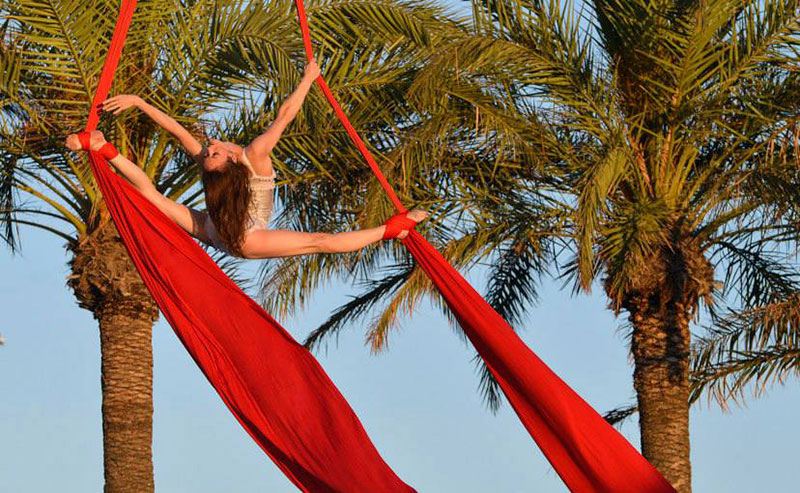
WHY do we cross two times behind the back for this move? Why do we take our heel out of the knot? Why do we “clench for Jesus” as we slide in front of the fabric? The *why* is important. Yes, circus theory is a thing! You should know the why behind what you’re doing. No understanding of the theory behind it.Not only are you more likely to fall on your head, you’re practically guaranteed repetitive stress injuries (tendinitis, bursitis, etc.), popped hamstrings, or soft tissue injuries like a torn labrum. Without the supportive skills, moves higher up the progression tree are dangerous and hard. Ultimately, a progression map looks a lot like a tree: there is a solid trunk (inversion in the air), then branches start forming (hip key in the air), and so on, all the way to the fancy leaves at the end (drops from a hip key). Good luck with that.Įvery single move in circus is built on foundations of proper body positioning, strength, and mental readiness (it’s a thing). How many of you are trying to execute a hip key in the air before mastering in-air inversions? Dear Danglers, inversions in the air come before hip keys in the air! I’ll bet you’re in bad habit city right now.

This seems pretty common sense, right? Well, I started with an easy one for you. I do not allow or encourage her to start with a double star (duh) we work on simply standing on the fabric. She has never taken a silks class in her life. For example, Lulu comes to aerial silks group class. Simply put, a movement progression is building off of foundational skills to achieve or pursue an advanced state.

Another reason professional aerialists typically use high stretch fabrics is that it’s more of a task to do upscaling moves and climbsįun Fact: Aerial Silks fabrics can hold more than 1,000 pounds of weights, while most fabrics have a tensile strength or a breaking point at about 2,000 pounds of weight.WHY PROGRESSIONS ARE ESSENTIAL IN AERIAL AND CIRCUS TRAINING

Most low-stretch fabrics are typically meant for aerial beginners so that it’s easier to learn different skills. On the other hand, medium and high stretch fabrics are used by more skilled and intermediate aerialists and provide more bounce when doing different skill moves and drops. The fabrics used for Aerial Silks can also be classified by the amount of stretch allotted in a specific fabric or silk, either low stretch or medium stretch fabrics. Most are made from two different materials, nylon tricot or polyester-lycra which allow for a giving or two-way stretch. It’s also customary for intermediate and expert level athletes and performers to have shorter fabrics. It’s a rule of thumb for beginner aerial athletes to get longer fabrics, this helps being spotted when practicing different types of wraps, climbs and drops.

When practicing aerial silks the equipment required is essentially the same for all levels.


 0 kommentar(er)
0 kommentar(er)
